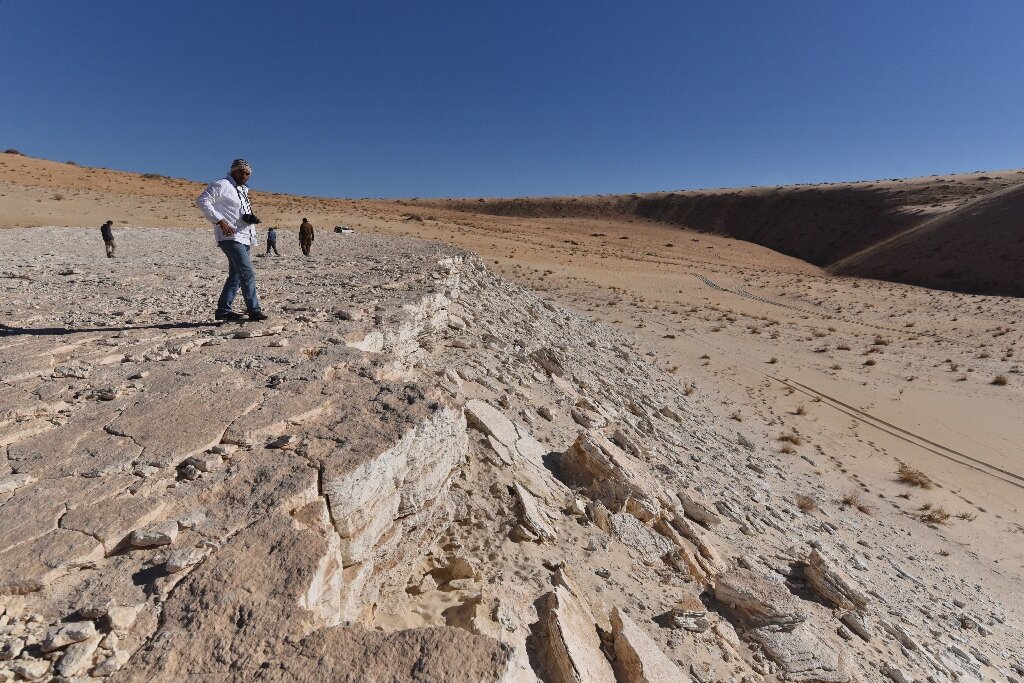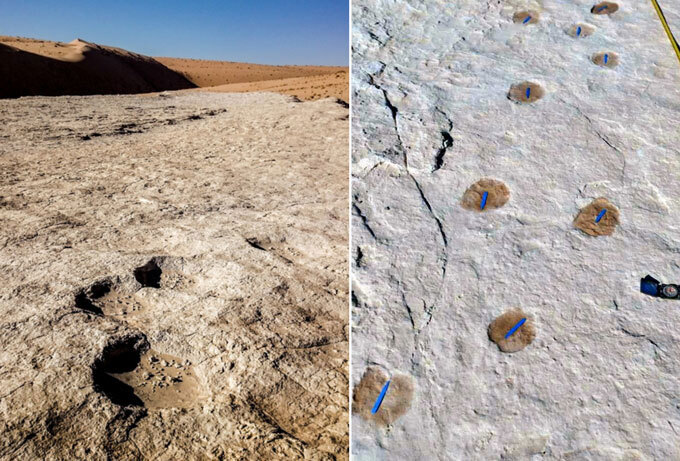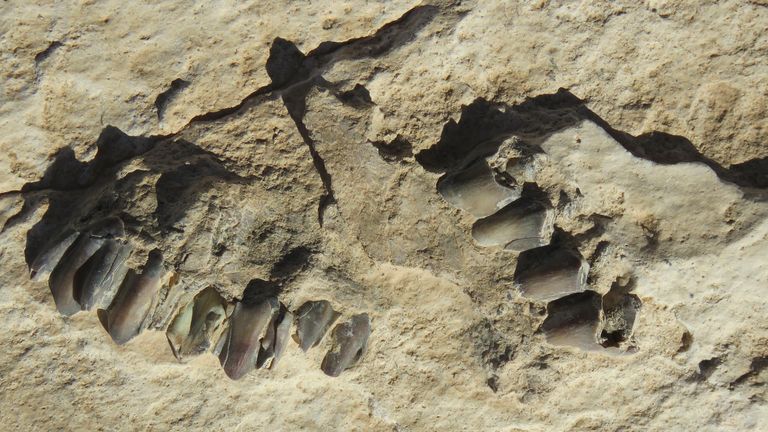Migratory Early Man in Arabia
"The presence of large animals such as elephants and hippos, together with open grasslands and large water resources may have made northern Arabia a particularly attractive place to humans moving between Africa and Eurasia."Michael Petraglia, Professor of Human Evolution and Prehistory, Max Planck Institute for the Science of Human History, Jena, Germany
 |
| Human footprint discovered at Alathar. Photograph: Stewart et al, 2020 |
"Environmental changes during the last interglacial would have allowed humans and animals to disperse across otherwise desert regions, which normally act as major barriers during the less humid periods, such as today.""These findings suggest human movements beyond Africa during the last interglacial extended into Northern Arabia, highlighting the importance of this region for the study of human prehistory."Ian Candy, Pleistocene archaeologist, Department of Geography, Royal Holloway, University of London, UK
A team of researchers from Saudi Arabia, Germany, Australia and the UK. discovered seven archaeological layers at an excavation site in the modern-day Nefud Desert, a discovery written up in the Saudi Gazette and published in Science Nature. What the archaeologists discovered was that over time significant changes occurred to the environment which ranged from extremely arid to the opposite conditions. The exciting discovery of human footprints along with those of elephants, camels and other animals dating back 120,000 years represent an astonishing find on the part of the international team of paleoarchaeologists.
Discovering the ancient footprints and evidence indicating that at one time in ancient history a lush environment prevailed, has alerted scientists to a new reality, one demanding that hypotheses detailing human migration from Africa into Europe is about to undergo a major revision. The humans whose presence so long ago produced the footprints roamed the land, according to the newly informed data taking advantage of the presence of a lake whose near proximity sustained life in the very geographic region currently inhospitable to life.
 |
| daily sabah.com |
The sediment that had been gathered over time on top of the footprints had eroded, leaving the footprints exposed leading to the discovery of their existence in 2017. From the evidence; the height, gait and mass of the individuals who had been responsible for the footprints, scientists were led to the conclusion that it was Homo sapiens that had left those marks for posterity, and not any other species similar to 'man the wise' such as Neanderthals. Four of the prints resulted from a group of two or three early humans travelling together.
 |
At the site of the ancient lake, no tools were discovered, leading the researchers to speculate that human habitation was not directly beside the lake, that those living nearby travelled to the lake to collect water. A total of 233 fossils and 369 animal tracks were revealed to the archaeologists who make of the numbers the conclusion that the site represented a a popularly-frequented watering hole.
Before this seminal discovery, scientists had believed humans had migrated out of Africa into the Levant using coastal routes. The recent findings, however, have led conclusions in another direction, with theories that early humans followed lakes and rivers in a period known as the "last interglacial".
 |
| The footprints could help understand how humans spread out of Africa. Pic: AFP/Paul Breeze |
Labels: Excavations, Paleoanthropology, Preserved Human/Animal Tracks, Research, Saudi Arabia

0 Comments:
Post a Comment
<< Home